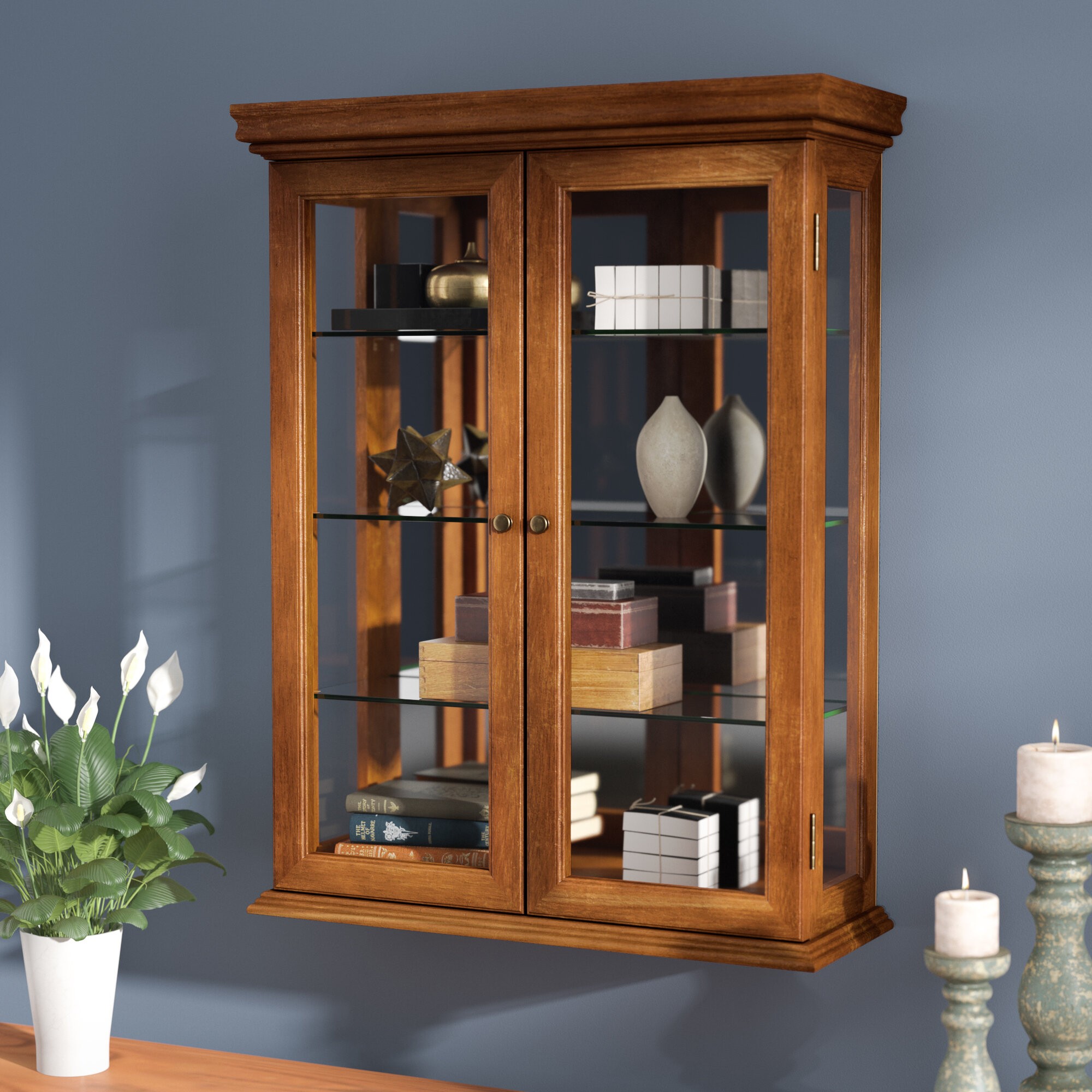Choosing the Right Cabinet: Hanging Wall Cabinet With Glass Doors

Selecting the perfect hanging wall cabinet with glass doors involves considering various factors that ensure functionality, aesthetics, and durability. These factors are essential for making an informed decision that meets your specific needs and preferences.
Cabinet Size
The size of the cabinet is crucial for determining its storage capacity and suitability for your space. A cabinet that is too large can overwhelm the room, while one that is too small may not provide enough storage. To determine the ideal size, consider the following:
- Measure the available wall space: Carefully measure the width, height, and depth of the wall where you plan to install the cabinet. Allow for adequate clearance on either side of the cabinet to ensure easy access and prevent it from hitting other furniture or fixtures.
- Assess your storage needs: Consider the items you plan to store in the cabinet and their dimensions. A larger cabinet is necessary for storing bulky items, while a smaller cabinet may suffice for storing smaller items. It is also helpful to consider the weight of the items you plan to store, as heavier items may require a sturdier cabinet.
- Consider the cabinet’s depth: A deeper cabinet offers more storage space, but it may protrude further into the room, affecting traffic flow. Shallow cabinets, on the other hand, may be ideal for smaller spaces or areas with limited wall space.
Cabinet Material
The material of the cabinet significantly impacts its durability, aesthetics, and price. Each material offers unique advantages and disadvantages, making it essential to choose the right material for your needs and preferences.
- Wood: Wood is a classic and versatile material that offers a warm and natural look. It is also durable and can be finished in various ways to match any décor. However, wood can be expensive, susceptible to scratches and water damage, and may require regular maintenance. Examples of wood used for cabinets include oak, maple, cherry, and walnut.
- Metal: Metal cabinets are known for their durability, strength, and resistance to scratches and water damage. They are also relatively affordable and come in various finishes, including chrome, stainless steel, and black powder coat. However, metal can be susceptible to dents and scratches, and it may not be as aesthetically pleasing as wood. Common metal cabinet materials include steel and aluminum.
- Glass: Glass cabinets offer a modern and sleek look and can create a sense of spaciousness. They are also easy to clean and maintain. However, glass can be fragile and susceptible to breakage. Glass cabinets are typically used for showcasing decorative items or for displaying items in a retail setting. Examples of glass cabinet materials include tempered glass and frosted glass.
Cabinet Style, Hanging wall cabinet with glass doors
The style of the cabinet should complement the overall décor of the room. Consider the following style options:
- Traditional: Traditional cabinets typically feature ornate details, such as carvings, moldings, and intricate hardware. They are often made from solid wood and finished in a dark stain or paint. Traditional cabinets can add a touch of elegance and sophistication to any room.
- Modern: Modern cabinets are characterized by clean lines, simple designs, and minimalist details. They are often made from metal or glass and finished in a neutral color. Modern cabinets can create a sleek and contemporary look in any room.
- Contemporary: Contemporary cabinets share similarities with modern cabinets but often incorporate more unique and eclectic elements. They may feature bold colors, unusual shapes, or mixed materials. Contemporary cabinets can add a touch of personality and individuality to any room.
Budget
The budget is a critical factor to consider when selecting a hanging wall cabinet with glass doors. The cost of cabinets can vary widely depending on the size, material, style, and brand. It is essential to set a realistic budget and stick to it.
- Consider the long-term value: While it may be tempting to choose the least expensive option, consider the long-term value of the cabinet. A higher-quality cabinet made from durable materials will last longer and may require less maintenance over time. It is also important to consider the cost of installation, which can add to the overall expense.
- Shop around: Compare prices from different retailers and manufacturers to find the best value for your money. It is also helpful to read reviews from other customers to get an idea of the quality and durability of different cabinets.
Measuring and Planning for Installation
Proper measuring and planning are essential for a successful installation. Here are some tips to ensure a safe and secure installation:
- Measure the wall space carefully: Measure the width, height, and depth of the wall where you plan to install the cabinet. Allow for adequate clearance on either side of the cabinet to ensure easy access and prevent it from hitting other furniture or fixtures.
- Consider the weight of the cabinet: Heavy cabinets may require additional support, such as wall anchors or specialized mounting hardware. It is essential to consult the manufacturer’s instructions for recommended installation methods and hardware.
- Use a stud finder: Locate the studs in the wall to ensure that the cabinet is securely mounted. Installing the cabinet directly into studs will provide the most secure and stable installation.
- Use a level: Ensure that the cabinet is level before drilling any holes or attaching it to the wall. A level will help ensure that the cabinet is installed straight and securely.
- Follow the manufacturer’s instructions: Always follow the manufacturer’s instructions for installing the cabinet. These instructions will provide specific guidance on the recommended hardware, installation methods, and safety precautions.
